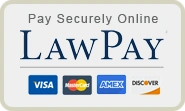Did you know that the total outstanding national student loan balance, as of February 2014, is $1.08 trillion? That number is on the rise. Unfortunately, 11.5% of those loans are more than 90 days delinquent or in default. This means that student loan debt has the highest delinquency rate among all forms of debt – including credit card debt. Student loan debt is the only debt that has consistently risen in the past decade. Even as delinquencies in credit card debts, mortgages, and automobile loans are seeing slight decreases, student loan delinquencies are rising – and have been since the recession began.
Unfortunately, discharging student loan debt in bankruptcy is difficult, if not impossible.
There’s no shortage of predatory lending going on in this sector. Last month, the Consumer Financial Protection Bureau filed a lawsuit against one of the biggest contributors to predatory lending, ITT Educational Services, Inc. The lawsuit claims the for-profit college chain of student lending is using high-pressure tactics to push many students into expensive private student loans that were likely to end in default. This marks the first public enforcement action against a company in the for-profit student loan industry.
And still, student loan debt is extremely difficult to discharge in a bankruptcy filing. Student loans are “included” in all bankruptcy filings. In other words, you must list all of your creditors, including student loan creditors, when you file your bankruptcy case. However, your student loans, while listed and therefore “included” in your bankruptcy, survive your bankruptcy discharge.
The Fifth Circuit has adopted the “Bruner test” which essentially makes student loan debt not dischargeable unless you are 100% disabled.
The National Association of Consumer Bankruptcy Attorneys is lobbying Congress in an attempt to see that the Bankruptcy Code is amended to provide that private student loans are dischargeable in bankruptcy cases. Unfortunately, Congressional gridlock has precluded any progress in this area.
Ms. Shank is advising clients with unmanageable student loan debt to file a Chapter 7 bankruptcy case to get rid of all of their non-student loan debt. She then assists them with an income-contingent repayment plan for their student loan debt. This plan allows a client to pay only what they can afford under a calculation set forth by the Department of Education, even if this payment does not repay the loan. After 25 years, the balance of the student loan is forgiven. She also advises clients to consider the Public Service Loan Forgiveness Program, which forgives student loan debt for student loan borrowers who work in the public sector for 10 years.
So, a Chapter 7 bankruptcy combined with one of these federal programs can clients manage their financial problems.


